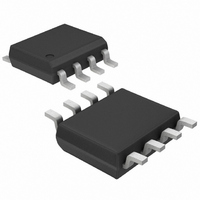DS1682S Maxim Integrated Products, DS1682S Datasheet - Page 6

DS1682S
Manufacturer Part Number
DS1682S
Description
IC TIMEKEEPER ALARM ELAPSE 8SOIC
Manufacturer
Maxim Integrated Products
Type
Elapsed Time Counterr
Datasheet
1.DS1682S.pdf
(14 pages)
Specifications of DS1682S
Memory Size
10B
Time Format
Binary
Date Format
Binary
Interface
I²C, 2-Wire Serial
Voltage - Supply
2.5 V ~ 5.5 V
Operating Temperature
-40°C ~ 85°C
Mounting Type
Surface Mount
Package / Case
8-SOIC (3.9mm Width)
Lead Free Status / RoHS Status
Contains lead / RoHS non-compliant
Available stocks
Company
Part Number
Manufacturer
Quantity
Price
Part Number:
DS1682S
Manufacturer:
MAXIM/美信
Quantity:
20 000
Company:
Part Number:
DS1682S+
Manufacturer:
Maxim
Quantity:
9 179
Company:
Part Number:
DS1682S+
Manufacturer:
Maxim
Quantity:
74
Part Number:
DS1682S+
Manufacturer:
MAXIM/美信
Quantity:
20 000
Company:
Part Number:
DS1682S+T&R
Manufacturer:
MAXIM
Quantity:
78
Part Number:
DS1682S+TR
Manufacturer:
MAXIM/美信
Quantity:
20 000
EVENT LOGGING
When the DS1682 is powered up, the event time and count values recorded in the EEPROM are
transferred to the ETC and event counter, and the device waits for an event. When an event triggers the
input by transitioning the EVENT pin from a low to a high level, the following occurs:
1) The RC oscillator starts.
2) The alarm, ETC, and event counter are transferred from EEPROM to RAM.
3) Note: Reading the RAM during the transfer results in invalid data.
4) After t
5) The ETC increments every TEI. The ETC holds time in quarter-second resolution.
6) When the EVENT pin goes low, the event counter increments, the oscillator stops, and the ETC and
The ETC stops counting and does not roll over once FFFFFFFFh, or approximately 34 years, is reached.
See Figure 5 for timing.
Figure 5. Event Input Timing
DEVICE SETUP
Once installed in a system, the DS1682 can be programmed to record events as required by the
application, and can be tested by generating events and monitoring the results. Afterwards, it can be
“locked” to prevent alteration of the event and alarm registers and the alarm condition.
The following is a typical sequence:
1) Write the configuration register, alarm registers, and user memory to the desired values.
2) Write-protect the alarm, ETC, and event counter registers with the write disable command if needed.
3) Write-protect the user memory with the write-memory-disable command, if needed.
4) Issue a reset (described in the Reset Command section).
The alarm, ETC and event counter registers, and user memory, once locked, cannot be changed.
Upon reset, the ETC and event counter registers are cleared. The device clears the RE bit, and the
configuration register becomes read-only. Additional resets are ignored.
but not the ETC (zero-length event).
event counter are transferred to EEPROM. The 2-wire bus is not available for t
ES
, the ETC increments. An event greater than t
6 of 14
G
but less than t
ES
increments the event counter
EW
.












